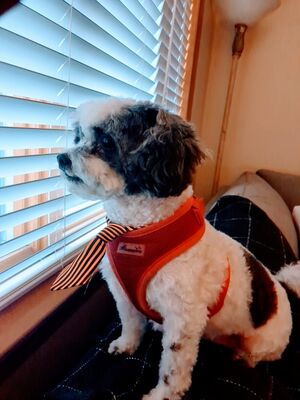Tripod suggestions
Mar 13, 2020 12:49:13 #
As for tripods, my personal favorite is made by Gitzo. Since they offer numerous models, the choice would be up to you to pick the one that suits your needs best.
--Bob
--Bob
trapper1 wrote:
Planning to buy a new tripod and would appreciate suggestions as to which, preferably by make and model, of the gazillion models available might suit my needs. No professional-level models, just hobbyist-type. I want one that has a head assembly that traverses vertically as well as horizontally for sky shots, etc.. My present tripod, like my handhold, is rather shaky so steadiness is a must.
Mar 13, 2020 12:49:18 #
RWR wrote: I believe in the right tool for the job, and have yet to find one tripod that’s suitable for all applications. Photography is much more enjoyable with the right tripod for the camera and lens in use.
I believe in the right tool for the job, and have yet to find one tripod that’s suitable for all applications. Photography is much more enjoyable with the right tripod for the camera and lens in use.
 I believe in the right tool for the job, and have yet to find one tripod that’s suitable for all applications. Photography is much more enjoyable with the right tripod for the camera and lens in use.
I believe in the right tool for the job, and have yet to find one tripod that’s suitable for all applications. Photography is much more enjoyable with the right tripod for the camera and lens in use.I believe you, but my wife doesn't.

Mar 13, 2020 13:59:17 #
I get your thinking but I also don’t think it’s a good idea to put $8,000-$15k of gear atop a $150 tripod.... Nice thing is there are many options in the marketplace and we each get to choose how to spend our money...
mas24 wrote:
I still have a tripod that my father gave me after... (show quote)
Mar 13, 2020 14:24:12 #
Leitz
Loc: Solms
RWR wrote:
Obviously, and I’ve said about the same thing in the past, yet some have swallowed it.
Ha! There have been some complaints, and I have been chastised by Admin for condescending remarks. So, not wishing to offend anyone, I have determined to refrain from calling a spade a spade. Therefore, I will only say that those who believe all the advertisements have been deceived. Certainly Gitzo tripods are excellent, but some of their claims are suspect at best.
Mar 13, 2020 14:24:32 #
Gene51 wrote:
What do you consider a better tripod that adheres ... (show quote)
Gene ..excellent points ...as were some of the opinions of others ...best Tripod is the one for the job at hand ..., no tripod fits all needs ... weight means nothing .., aluminum works just as good as carbon fiber .., consider earth rotation and harmonic balance .., I’m sticking with the known brands .. plan ahead for your tripod needs and camera/lens future acquisitions .., It’s like your opinion of your doctor .., I have the best heart surgeon in the world .., everyone says they have the best when comparing ...well, not always so ...
I happen to see what some of the NATGEO guys were using on location hiking ..in rivers and ocean salt water ..surprised to find A Chinese product called FOTOPRO ..I have had a 1/2 dozen tripods including the largest made by Manfrotto and its 5.6lb head ...and 1/2 dzn monopods ... different shooting situations require different platforms ..., so true ..
After being in manufacturing and design and R&D most of my life including patents ...I used my expertise in choosing a T83-C FOTOPRO ..NO CENTER column ..3 leg carbon fiber 36 mm top leg diameter ...will actually hold my 200lb as I can swing my legs and spider straddle it ...
Yes GITZO and SIRUI and RRS make similar and a ton of professionals have them and swear by them ..., so just like the doctor thing ..everyone swears they have the best specialist in the world ..., well there is only one BEST ..all else is #2.. and so many are similar ...almost as good as #1 ...actually the Best 1 is the one that works for you and your needs ...and dare I say .., your pocket book ...
I look at build quality /price/and my camera/lens requirements .., compare at the camera store .., forums ..and see what the professionals are using and endorse ..look at the price and make a educated guess ..
My monopod of choice is a SIRUI P-436-S .. I bought 2 of them after trying so many others .. SIRUI has come a long way in tripod design ...they are quite good now ...
So bottom line I got my $800 US + FOTOPRO from Canada ..with the the exchange rate about $425 delivered to Calif ...and never looked back .. I’ve used it in rivers ..ocean water , just about everywhere Have a carbon fiber gimbal attached (when needed) and have been a happy camper ..all will handle a 600mm with ease ..
I’m no pro by any stretch of the imagination .., I figured that the NATGEO guys use it for their work hiking everywhere and beating up their equipment so I was easily swayed in that direction .., glad I did .. BTW ..I posted all this in 2016 ..
4 leg shown ..I have 3 leg
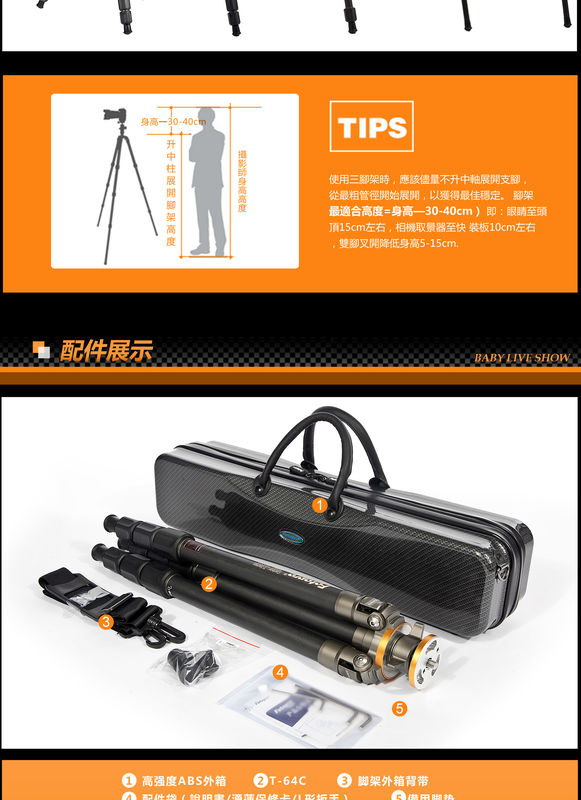
(Download)
Well built
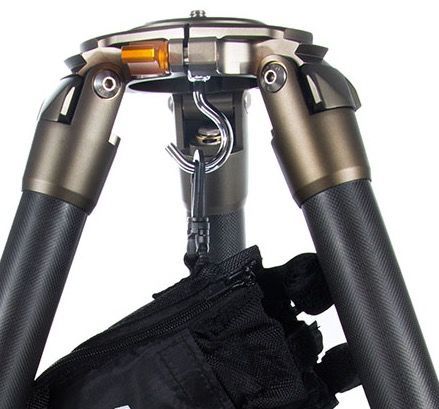
(Download)
Will lay flat
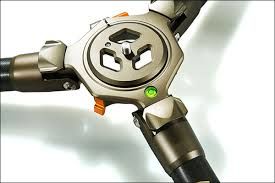
(Download)
My model
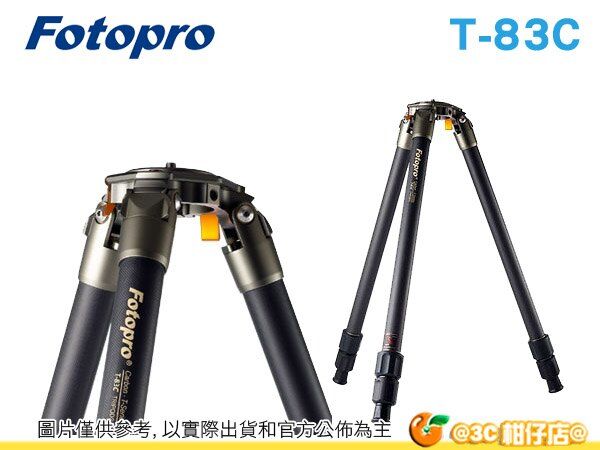
(Download)
My set up
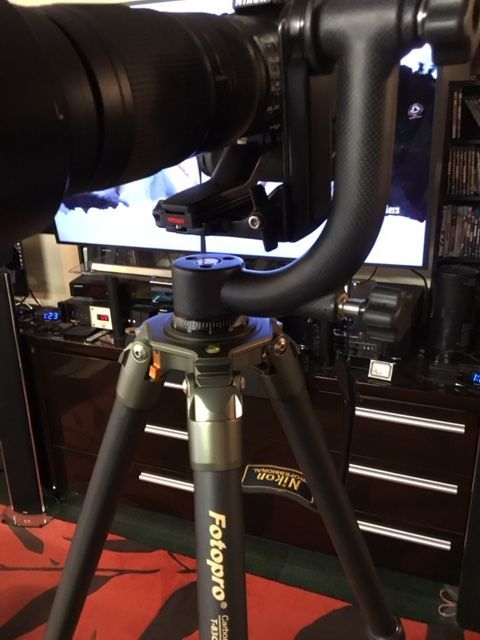
(Download)
Another look at my rig ..
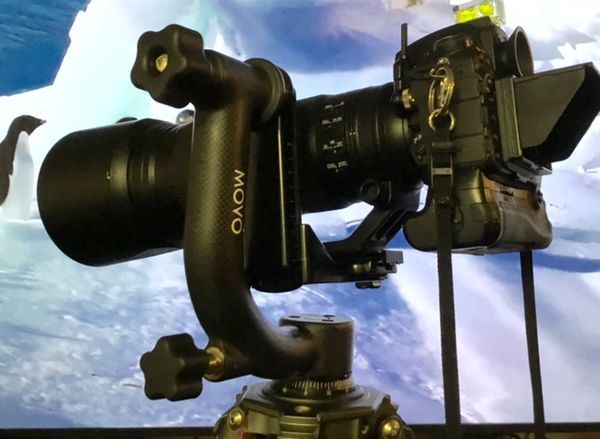
(Download)
Mar 13, 2020 14:26:15 #
amfoto1
Loc: San Jose, Calif. USA
trapper1 wrote:
Planning to buy a new tripod and would appreciate suggestions as to which, preferably by make and model, of the gazillion models available might suit my needs. No professional-level models, just hobbyist-type. I want one that has a head assembly that traverses vertically as well as horizontally for sky shots, etc.. My present tripod, like my handhold, is rather shaky so steadiness is a must.
A quality tripod will last a lifetime, will do the job well with a variety of gear, will be comfortable and a pleasure to work with, so you are more likely to actually use it, rather than leave it at home in a closet. It's all about compromise with tripods... finding the compromise that meets your particular needs best. Don't buy too cheap... You'll probably just end up replacing and re-buying over and over, ultimately end up spending more than if you'd just opened your wallet a little bit wider for your first purchase.
There are two primary ways to buy a tripod... One is to buy a matched head and leg set combo put together by the manufacturer. The other option is to buy separate components and assemble them yourself. Some parts and fasteners, such as the mounting studs for heads, are pretty universal across brands. It may be better in some cases to buy a matched set, such as a travel tripod with legs that reverse fold over the head to be as compact as possible, as well as protect the head. There also may be some savings buying a matched set. But for many people it makes more sense to buy the items separately, to get exactly what you need and want.
Starting with the leg set, the most stable tripod will have....
1. Larger diameter leg tubing.... While Gene is correct that tripods with 40mm & larger top tube is certainly correct, those are also the biggest, heaviest and most expensive tripods, such as Gitzo Series 5 Systematic. The other extreme is often the case in the ongoing search for the lightest tripod possible. I would imagine that most people find a compromise that works for them... large enough to steadily support the gear they use, but a practical weight and
2. As few leg sections as possible... Each additional section has to be smaller diameter to fit inside the section above it. Those smaller diameter sections and the additional locking joints tend to reduce stability to some extent. Obviously though, fewer sections make for a tripod that folds up less compactly for transport and storage. More leg sections also can make a tripod slower and more "fiddly" to set up. You have to arrive at a compromise that works for you.
3. Carbon fiber is the best, but most expensive material. Often it's touted for it's lighter weight, but equal strength. While that's true, CF is also good at absorbing some vibrations that metal construction might be more prone to transmit to the camera. CF also can be a bit more comfortable to work with in cold conditions. However, while CF can offer as much supportive strength as metal, it also can be a bit more susceptible to crush damage. And CF is more difficult for manufacturers to work with... requiring different fastening methods, epoxy glues instead of threaded fittings, for example. Weigh price versus weight versus the other factors. Be a little wary of off-brand CF, where the quality of the materials and construction may be questionable.
4. No center column... Or, at least, a tripod legs alone are tall enough that you don't normally need to raise the center column much or at all. Many tripods have a center column that's integral to their design and construction, so it can be a bit challenging to find a model that doesn't have one. Certainly limits your choices, but is possible. For example, modular "Systematic" style tripods have the option of using them with a center column or not.
It also can be difficult to determine the true working height of a tripod. Many ads and manufacturer specifications for tripods with one will cite the height with the center column fully extended, which makes the tripod pretty unstable. Look for more info online, ask questions or try to estimate the height of the tripod without it's center column raised. Hopefully this will be sufficient height for you to use comfortably.
How tall do you really need? To be comfortable under a wide variety of conditions, a tripod needs to position your camera's viewfinder eyeport slightly above your eyeline. Unless you're a Star Wars alien character, your eyeline is a few inches less than your total height. Measure that while standing flat footed. Now try to find the extended height of the tripod (without raising the center column).... keeping in mind that the camera itself, the tripod head, and any accessories between the head and the leg set (such as a leveling platform) all add to that height.
5. What type of leg locks do you prefer? There are three basic types: thumbscrews, levers and twist collars. Thumbscrews and levers protrude a bit, so can catch on things like branches or sleeves while carrying or working around the tripod. Thumbscrews and twist locks are largely self-adjusting, not prone to wear or their design simply compensates for it without any need for user adjustments. Levers are typically the fastest type of locking mechanism, but will wear over time and need adjustment or possibly repair. Some lever designs also might be easy to accidentally release.
Next you need to decide on a tripod head... possibly purchased separately, though there may be a matched set available for your purposes. You'll have to decide...
1. What type of head will best meet your needs? There are ballheads, pan/tilt heads, video heads, pistol grip heads, gimbal heads, as well as a number of hybrid types. You mention "sky photos", but I'm not sure what that means. Astrophotography? If that's the case, you will probably want a pan/tilt head for the more precise control they can offer. A video head is similar, but often don't have as much vertical movement and aren't designed to allow the camera to be vertically (portrait) oriented. Video heads also tend to be heavier and often have longer control handles. Ballheads and pistol grips can be more compact, but don't have as precision control as pan/tilt do. Shop around and give it some thought. If you buy a head separately, almost all tripods and heads use a 3/8" threaded stud and socket to fasten the head to the tripod (smaller, lighter ones may use 1/4", but adapters are widely available).
2. Do you want to use a quick release system? If so, the Arca-Swiss system is by far the most universal... many manufacturers make products that are compatible with it. Even some camera accessories and lens makers are now incorporating the dovetail that allows them to be directly mounted to an Arca-Swiss style quick release platform. Other tripod/head manufacturer quick release systems are largely proprietary... they are incompatible with anyone else's and there are limited choice of available products. The brand of head you buy might dictate what's available.. There may be adapters or replacement parts that allowing conversion to another type, though it's always nice to avoid them unless necessary.... any adapter adds another connection that might loosen or fail.
Other things to consider...
1. Will you want any accessories? For example, if you are doing astrophotography and pan to use a motorized tracker, that will add some weight that you may need to take into consideration. Personally I use a gimbal a lot with big telephotos and find a leveler a handy accessory. This fits between the head and the tripod legs, allowing for quick, safe adjustments each time I move the tripod... I find a leveler a lot faster, less fiddly and probably safer than adjusting leg lengths to level the head. But it does add some weight and cost. Tripods made for video sometimes use a "bowl" design that serves a purpose similar to a leveler.
2. Some tripods have center columns that rotate to a horizontal orientation or beyond, to allow for special positioning of the camera. This may compromise stability and durability, so I'm always a bit leery of features like this. I have similar concerns about tripods that allow one leg to be removed to use as a monopod (sometimes the center column is also removed and combined with the leg, for this purpose). I can't help but wonder how this might effect stability and overall durability, too.
3. Availability of replacement parts. Sooner or later a part might wear out or get broken. Most well-established brands have at least some of the more commonly needed parts available, though replacements might become scarce after a model has been discontinued and superseded.
Personally I have several tripods bought over the years...
Over 40 years ago I bought a Bogen (now Manfrotto) aluminum tripod I refer to as "the Beast". It weighs some 16 or 18 lb., has a geared center column (but is tall enough I don't need it most of the time), is cross-braced for stability, has three section legs and has a pan/tilt head. Over the years, it's supported a wide variety of cameras from compact 35mm and digital to medium and large format film and lenses from ultra compact "pancakes" to ultra telephoto 800mm. Cost me around $400 in the late 1970s, if I recall correctly. I hauled it all over the place when I was younger, but it's now my "studio" tripod and is on a dolly so I can roll it around, rather than have to carry it! I have no idea that tripod's weight capacity, but back in the day the Bogen ads showed a guy sitting on a similar tripod. I'd guess he weighed at least 150 lb.!
Nearly 20 years ago I got a Gitzo G1325 Mk II carbon fiber tripod for field work. It's a "Series 3" that has approx. 32mm diameter upper leg sections, three-section legs, is much lighter and just as stable as that old Bogen, although I'm sure it's "weight capacity rating" is considerably less (probably around 33 lb. for the legs alone... I certainly won't be sitting on it!) A "Systematic" tripod, this is a modular design without any center column, head or other accessories. I added a Kirk BH-1 ballhead (50 lb. rated) with Arca-Swiss quick release platform, got a Wimberley Sidekick gimbal adapter to use with that, and eventually added a Gitzo G1321 Leveling Platform between the head and legs. It has no center column but is more than tall enough for me (5' 9", last time I checked... my "eyeline" is about 62" or 63"... this tripod positions my cameras' eyeports well above that). All together it weighs approx. 8 lb.... certainly not a light weight, but half or less the weight of the old Bogen "Beast". Like everything Gitzo, this "rig" was expensive (though less than similar RRS). It cost well over $1000 twenty years ago and hasn't gotten any cheaper. Modern equivalent parts would probably cost $1500 or more.
Around five years ago I bought another C1325 Mk II... used. Same tripod so I knew exactly what I was getting. Plus this one came with a G1321 Leveler installed. And it cost me under $400 shipped. I added a cheap, full size gimbal head to it (~$100), so it's a "dedicated large-telephoto-lens-only" rig. (The Sidekick allows my original G1325 to be quickly and easily switched from gimbal to regular use, as needed... so it's not "long-tele-only".) Buying used and a cheap Chinese-made head, the total cost was under $500. I'll likely get a better gimbal for it eventually and that will add some cost.
Not long ago I also had an opportunity and bought another used Gitzo Series 3 Systematic CF tripod for a similar price. A G1348 with four-section legs that included a G1318 Rapid Center Column, it's actually an extra tall tripod so I don't have to raise the center column at all, unless I want a really high angle shot from two or three feet above my head! I also don't need to extend the lowest leg section at all normally, for comfortable use. But, if I need to shoot from 7 or 8 feet height, I can! More the reason I wanted a rapid center column ("rapid" means "not geared", i.e., it just slides up and down when the clamp is loosened... Gitzo also makes and sells a geared column, but I didn't want that) on this tripod was so that I could reverse it, hanging my camera below the tripod for low angle macro shots. I'm far more likely to use the tripod that way, than to use it at a high angle where it would be less stable (though I don't completely rule that out, if needed). I fitted this tripod with a cheap $80 Chinese knock-off of the Kirk ballhead, which turned out to be surprisingly good after I did a little work on it (replaced the heavy axle grease in it's bearings with a heavy synthetic oil... very smooth panning now). After several years use, the little rubber grips on that head's knobs deteriorated and fell off... so I replaced them with several layers of rubberized "grip tape" (like that used on steps to prevent slips). Works great, especially considering it cost less than 1/4 the very good Kirk BH-1's price. Total weight is approx. 9 lb. and total cost ended up around $500 again.
Do I need four tripods? Probably not. But I just couldn't pass up an excellent Gitzo for 1/3 the price... twice! I also didn't have too much concern about buying them used, because I know how well built, durable and trouble-free Gitzo tend to be.
In fact, I've got several other cheaper tripods too (you can never have too many!). Recently bought an old Bogen #144 with 3025 pan tilt head at a local second-hand store for $10... Cleaned it up, lubricated the movements a little and added an Arca-compatible quick release platform to it for $16 (from China, incl. shipping). It works fine and will be handy, I'm sure!
I haven't listed specific model recommendations because there are so many variables that you'll have to narrow down first. I've tried instead to give you some ideas what to consider and examples how I applied those to my own choices (which are likely different than yours). Hope this helps!
Mar 13, 2020 15:10:14 #
Having been involved with photography for more than 50 years using small cameras and up to 8"x10" cameras and up to 35mm motion picture cameras, my advice: get one that opens easily with or without gloves if important, a reversible center column is nice for macro work, and the best advice I was ever given the ability to hook or hang either a camera bag or, I used to carry a mesh bag that I could fill with rocks or whatever to further increase the weight and stability of the tripod. Personally I have three Gitzo tripods, two with ball heads.
Mar 13, 2020 15:20:21 #
amfoto1 wrote:
A quality tripod will last a lifetime, will do the... (show quote)
I guess you are not familiar with the LeoFoto LN-404C which costs $589 and has a 40mm top tube diameter.
I had a "beast" Bogen 3051 with 3047 head. Geared column, braces from legs to center column, 2 leg sections, about 15 lbs in weight. It was ok for my large format work indoors, but worthless with long lenses on 35mm or digital cameras - and it was a complete nuisance to carry around a tripod that only collapsed to 37". I ended up giving it away.
Mar 13, 2020 15:40:08 #
rmalarz wrote:
As for tripods, my personal favorite is made by Gitzo. Since they offer numerous models, the choice would be up to you to pick the one that suits your needs best.
--Bob
--Bob
Yep they are the best but I think the OP wasn’t concerned about professional tripods just wanted something for hobbyists. Don’t know what equipment he has but don’t think he wanted to spend hundreds...I could be wrong!
Mar 13, 2020 15:47:18 #
Leitz wrote:
I would take them with a large grain of salt. In particular, the ridiculous claim that there is a relationship between tube diameter and maximum usable focal length flies in the face of common sense.
Well if you take a minute to think about it - deconstruct the argument. Long lenses are notoriously prone to vibration - requiring the most stable platforms. Large diameter tubing is rigid more rigid than the skinny stuff. It needs a larger connection at the apex which in turn requires a bigger apex, which usually more rigid than skinny tubes and small apexes.
Not that ridiculous when you think it through.
Anyway, if you are not the thinking type, just look at what is on the market. The most rigid and stable tripods have the largest diameter legs, and looking at RRS, LeoFoto, Induro, FLM, Gitzo and others, they suggest their beefiest tripods for supporting the longest lenses Certainly not the other way around. It's no coincidence.
And then there is this:
"Systematic Tripod Rankings
These are largest, most stable tripods available. They tend to be modular, with a removable base that can be fitted with a video bowl or center column. They are tall, have large spider, and thick legs. Naturally, they also tend to be heavy and bulky."
https://thecentercolumn.com/rankings/systematic-tripod-rankings/
Why would you think a tripod with skinny legs would be no worse that a tripod with thicker legs with long lenses? Now THIS is the very definition of ridiculous . . .
Mar 13, 2020 16:38:43 #
mas24
Loc: Southern CA
Notorious T.O.D. wrote:
I get your thinking but I also don’t think it’s a good idea to put $8,000-$15k of gear atop a $150 tripod.... Nice thing is there are many options in the marketplace and we each get to choose how to spend our money...
Apparently, you didn't read the last two sentences of my thread. I never mentioned how anyone should spend their money. I stated the amount of money I would spend. You can spend your money as you please. It's your money. It's none of my business.
Mar 13, 2020 17:13:31 #
I do, but there are some on this forum that like to spend others money. Virtually everything is a compromise and my point is choices are good and we all get to pay our money and take our pick.
mas24 wrote:
Apparently, you didn't read the last two sentences of my thread. I never mentioned how anyone should spend their money. I stated the amount of money I would spend. You can spend your money as you please. It's your money. It's none of my business.
Mar 13, 2020 18:07:57 #
amfoto1 wrote:
A quality tripod will last a lifetime, will do the... (show quote)
Can you be a little more specific?
Mar 13, 2020 18:49:01 #
SuperflyTNT wrote:
Interesting, but would be more useful if they actually included the ratings.
I'm not getting into any continuing chat about it ...... but to my eye they do ...... but they're headed "Rankings" (see headers) for tripods (second column) and for ballheads and pan tilt heads (fourth column).
The "ranking" is given for each category in the "score" column (extreme right) for tripods ....... and in the "stiffness/weight" column (again, extreme right) for ballheads and pan tilt heads.
Highest "score" wins ! Straightforward enough for me !
Mar 13, 2020 22:44:10 #
Leitz
Loc: Solms
Gene51 wrote:
Well if you take a minute to think about it - deco... (show quote)
You're putting words into my mouth here. All I've said is that tube diameter alone is not a credible factor for determining how long a lens the tripod will stabilise. Tube wall thickness, quality of the tripod head and lens' tripod foot, how well the camera damps shutter and/or mirror vibrations, and image stabilisation all play a role.
If you want to reply, then register here. Registration is free and your account is created instantly, so you can post right away.






